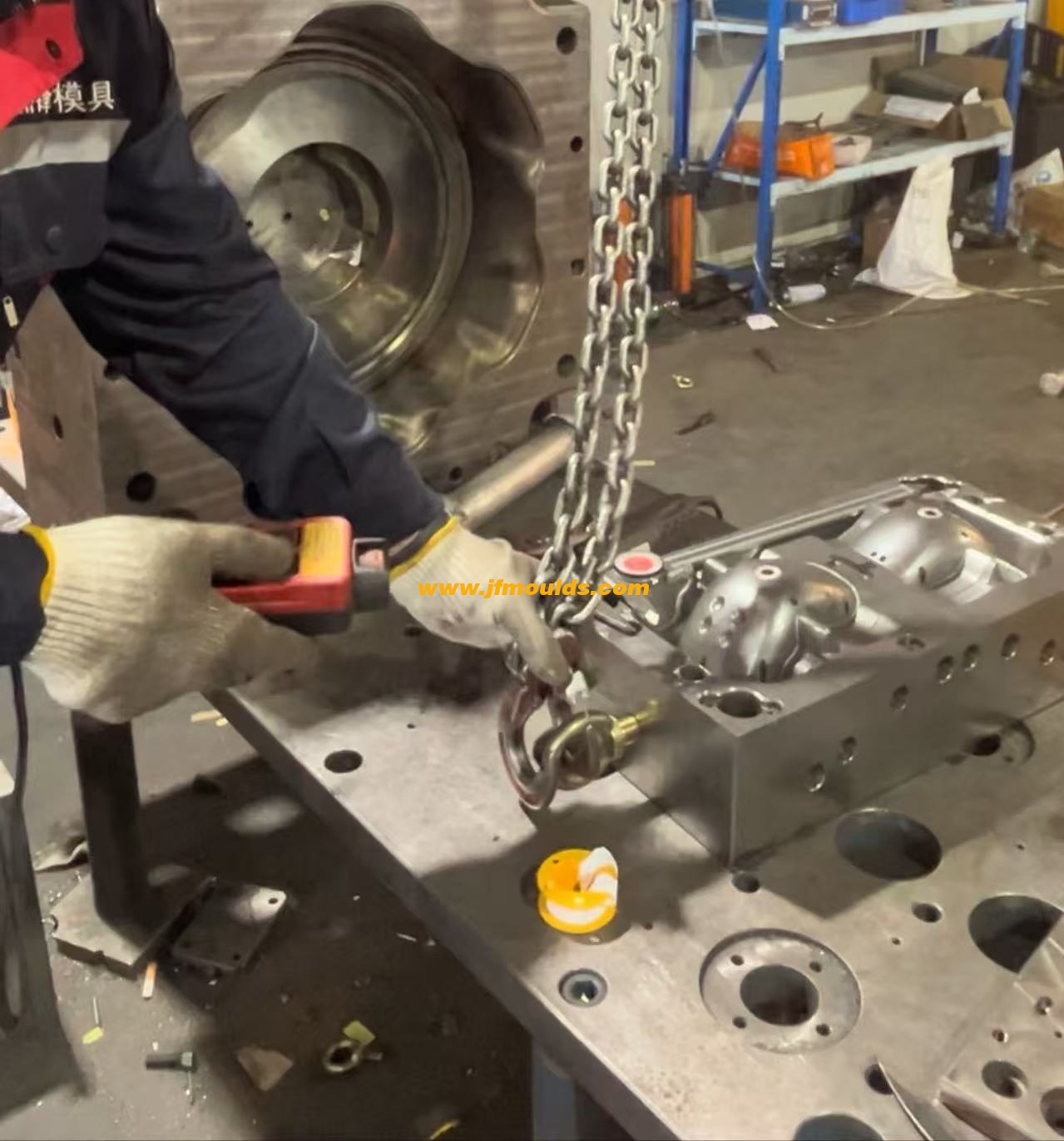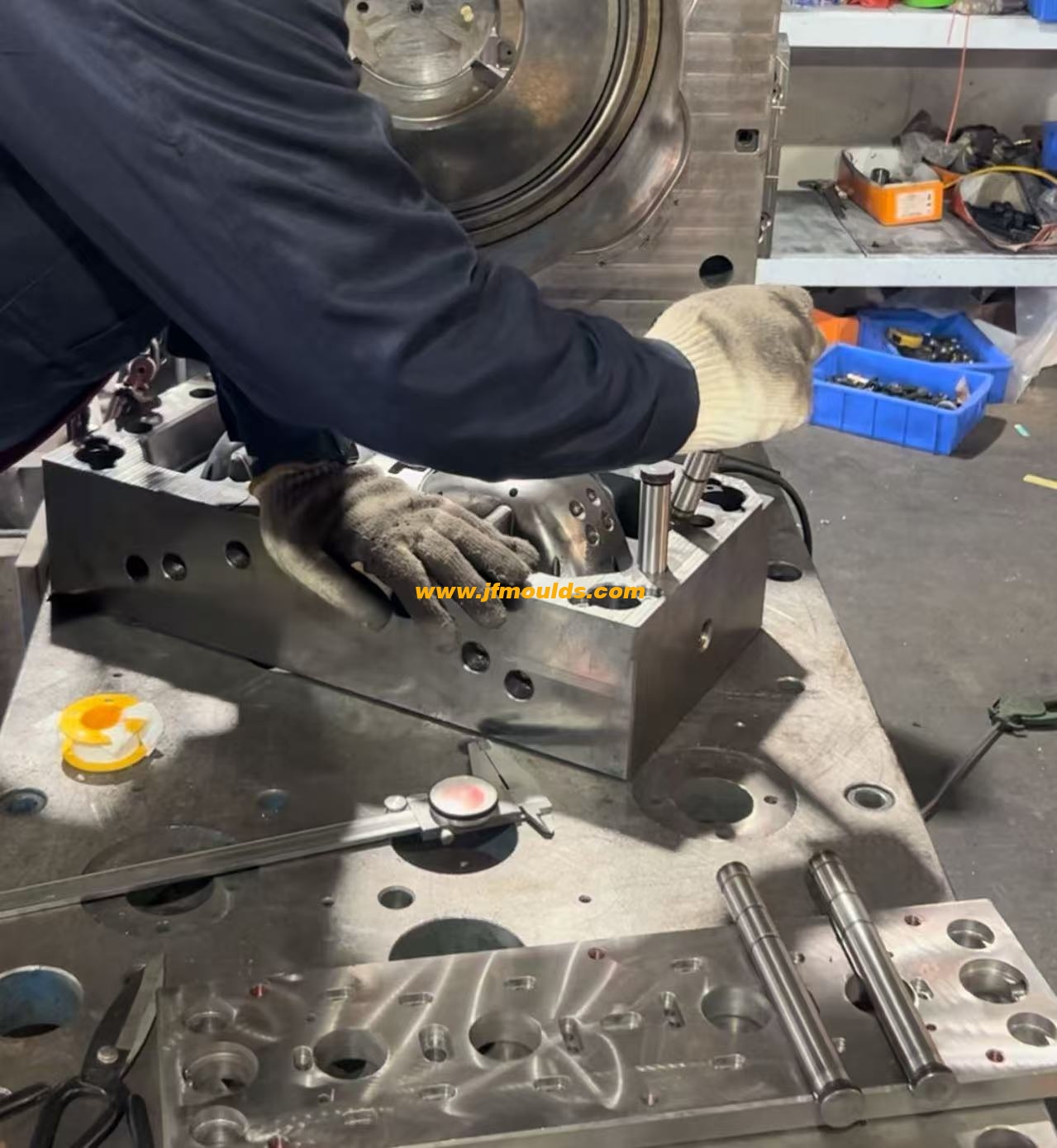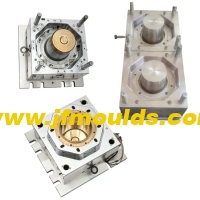Injection molds: The precision foundation and innovation engine of industrial manufacturing
Injection molds: The precision foundation and innovation engine of industrial manufacturing
In the vast map of the modern industrial system, injection molds are like a precisely operating "behind-the-scenes factory". Although they rarely appear in the public eye, they quietly shape every aspect of our lives with their outstanding molding capabilities. From the daily used mobile phone casings and home appliance accessories to automotive parts and precision components in the aerospace field, injection molds, with their efficient and precise production characteristics, have become the key link connecting materials and products, promoting the continuous progress of industrial manufacturing.
I. The Development Trajectory of Injection Molds: From Prototype to Precision Manufacturing
The development history of injection molds is a continuous technological evolution history of innovation, closely linked to the evolution of materials science, mechanical manufacturing and industrial demands. In the middle of the 19th century, the invention of celluloid marked the beginning of the plastic age, and early injection molding equipment emerged. Although it had a simple structure and could only be manually operated to form simple products, this pioneering attempt laid the foundation for the subsequent development of injection molding technology. At the beginning of the 20th century, the commercial application of phenolic resin pushed injection molding into the industrial production stage. Hans Becker and James Hendry's improvements to injection molding machines, especially the invention of screw injection molding machines, enabled efficient melting, compression and injection of plastics, significantly enhancing production efficiency and the stability of product quality.
During World War II, military demands prompted the rapid iteration of injection molding technology. Plastics, due to their light weight and ease of processing, were widely used in the manufacturing of military equipment. After the war, with the vigorous development of the consumer goods market, injection molds have been widely applied in daily necessities, toys, auto parts and other fields. In the 1960s and 1970s, the emergence of advanced technologies such as multi-color injection molding and gas-assisted injection molding enabled injection molds to produce more complex and multi-functional products. In the 1980s, the integration of computer control technology enabled precise parameter regulation in the injection molding process, resulting in a qualitative leap in the processing accuracy and production efficiency of injection molds. Entering the 21st century, the wave of Industry 4.0 has driven injection molds towards intelligence and automation. The application of cutting-edge technologies such as the Internet of Things, big data, and artificial intelligence has enabled real-time monitoring of the production process, fault prediction, and automatic adjustment. Injection molds have officially entered a brand-new era of intelligent manufacturing.
Processing equipment_Taizhou Jiefeng Mould Co.,Ltd. (jfmoulds.com)

Ii. Process Analysis of Injection Molding: The Precise Process of Product Birth
1.Injection molding is a complex process integrating mechanics, thermology and materials science. Through the close cooperation between injection molding machines and injection molds, it transforms plastic particles into plastic products with specific shapes and properties. This process mainly includes five key steps: mold closing, injection molding, pressure holding, cooling and mold opening and ejection. Each step has a significant impact on the quality of the final product and production efficiency.
2. Mold closing is the initial step of injection molding. The mold closing mechanism of the injection molding machine drives the moving mold to move rapidly towards the fixed mold. When the two approach each other, they decelerate and close slowly until they are completely adhered. During the mold closing process, the guiding system plays a crucial role, ensuring that the moving mold and the fixed mold are accurately aligned. Meanwhile, the closing force gradually increases, tightly locking the mold to resist the high pressure generated by the injection of plastic melt during the injection molding process. The magnitude of the clamping force is adjusted based on factors such as the mold size, the shape and wall thickness of the plastic product, and is generally between tens of tons and thousands of tons. For instance, for injection molds used in the production of large automotive bumpers, the clamping force typically needs to reach 1,000 to 2,000 tons to ensure the sealing and stability of the mold during the injection process.
3. Injection molding is a process in which plastic pellets are heated and melted in the barrel of an injection molding machine, and then injected into the mold cavity at high speed and high pressure through the rotation and push of the screw. During the injection molding stage, parameters such as injection pressure, injection speed and injection volume need to be precisely controlled. Injection pressure is adjusted according to the shape, size of the plastic product and the characteristics of the plastic material, generally ranging from 50 to 200MPa. The injection molding speed affects the filling speed and flow state of the plastic melt in the cavity. For thin-walled plastic products, high-speed injection molding is usually required to avoid defects such as short injection and trapped air. The precise control of injection molding volume ensures that the weight and size of plastic products meet the design requirements. For instance, when manufacturing mobile phone casings, the injection molding speed can reach tens of millimeters per second to quickly fill the thin-walled cavity and ensure the molding quality of the casing.
4. Pressure holding is a process in which, after injection molding is completed, a certain pressure is continuously applied to the plastic melt in the cavity to compensate for the volume shrinkage of the plastic melt during the cooling process and prevent defects such as shrinkage marks and voids in the plastic product. The holding pressure is usually lower than the injection pressure and gradually decreases as the cooling time extends. The reasonable setting of holding time and holding pressure is crucial for ensuring the dimensional accuracy and appearance quality of plastic products. If the holding pressure is insufficient, plastic products are prone to problems such as shrinkage marks and dimensional deviations. However, excessive pressure holding may lead to an increase in internal stress in plastic products, resulting in defects such as deformation and cracking. In actual production, it is necessary to determine the optimal pressure-holding parameters through multiple tests and optimizations.
5. The cooling process runs through the entire injection molding cycle. From the moment the plastic melt is injected into the cavity, the cooling system starts to work. Through the circulation of the coolant, it takes away the heat from the mold and the plastic product, gradually cooling and solidifying the plastic melt to form a plastic product with certain strength and shape. The length of the cooling time mainly depends on the wall thickness of the plastic product, the thermal properties of the plastic material, and the cooling efficiency of the mold. Generally speaking, the thicker the wall thickness, the longer the cooling time. Plastic materials with good thermal conductivity have relatively short cooling times. For instance, for common plastic products with a wall thickness of 3 to 5mm, the cooling time is usually between 10 and 30 seconds. For electronic product casings with thinner walls, the cooling time can be shortened to 5 to 10 seconds. To enhance the cooling efficiency, in addition to optimizing the design of the cooling system, some auxiliary cooling technologies can also be adopted, such as air cooling and liquid cooling.
6. Mold ejection is the final step of injection molding. When the plastic product cools to a certain extent and acquires sufficient strength and rigidity, the mold opening mechanism of the injection molding machine drives the moving mold to separate from the fixed mold, and then the ejection system starts to work, ejecting the plastic product out of the mold cavity. During the mold opening process, it is necessary to control the mold opening speed and mold stroke to avoid damage to plastic products due to too fast mold opening or failure to ejection smoothly due to insufficient mold stroke. The ejection force and ejection speed of the ejection system also need to be reasonably adjusted according to the shape, structure and size of the plastic products to ensure that the plastic products can be smoothly and steadily removed from the mold. After being ejected, the plastic products go through subsequent processes such as trimming, grinding and assembly to become the final products.
Process_Taizhou Jiefeng Mould Co.,Ltd. (jfmoulds.com)
Iii. Cutting-edge Innovations in Injection Molds: The Wave of Technology-driven Change
Against the backdrop of the global manufacturing industry's accelerated transformation towards intelligence, greenness and personalization, the injection mold industry is now facing unprecedented opportunities and challenges for innovation. The emergence and application of a series of cutting-edge technologies have injected new vitality into the development of injection molds, promoting profound changes in their design concepts, manufacturing processes, production models and other aspects.
The development of digital design and simulation technology has made the design process of injection molds more efficient and precise. With the help of computer-aided design (CAD) and computer-aided engineering (CAE) software, designers can conduct three-dimensional modeling and optimization design of mold structures, runner systems, cooling systems, etc. in a virtual environment. By simulating and analyzing physical phenomena such as plastic flow, temperature distribution, and pressure changes during the injection molding process, they can predict potential product defects in advance. Such as short shots, weld marks, shrinkage marks, etc., and the design plan is adjusted in a timely manner to avoid problems in the actual manufacturing process, thereby significantly shortening the design cycle and development cost of the mold. For instance, through CAE simulation analysis, the layout of the runner system and the gate position can be optimized to ensure uniform filling of the plastic melt in the cavity and reduce molding defects. The cooling system can also be simulated and optimized to enhance cooling efficiency and shorten the molding cycle.
The application of additive manufacturing (3D printing) technology in the field of injection mold manufacturing has brought revolutionary changes to mold manufacturing. 3D printing technology can directly manufacture complex-shaped mold components based on three-dimensional models by layer-by-layer material accumulation, without the need for tools, fixtures and molds in traditional processing techniques. This significantly shortens the mold manufacturing cycle and reduces manufacturing costs. Meanwhile, 3D printing technology can also achieve lightweight design of mold structures and the manufacturing of conformal cooling waterways, enhancing the performance and service life of molds. For instance, injection molds manufactured by 3D printing technology can be designed with complex internal structures, reducing the weight of the molds and lowering the energy consumption of injection molding machines. Conformal cooling water channels can better fit the surface of the mold cavity, achieving more uniform and efficient cooling, and improving product quality and production efficiency.
The integration of intelligent and automated technologies has enabled injection mold production to move towards intelligent manufacturing. Intelligent molds achieve real-time monitoring, fault prediction and automatic adjustment of the injection molding process by integrating sensors, data acquisition systems and artificial intelligence algorithms. Sensors can monitor parameters such as temperature, pressure and vibration of the mold in real time. The data acquisition system transmits these data to the control system. Through artificial intelligence algorithms, the data is analyzed and processed to predict possible faults of the mold and promptly issue early warning signals to guide operators in maintenance and adjustment. Meanwhile, the application of automated production lines has enabled fully automated production from raw material feeding, injection molding, product removal to post-processing, reducing manual intervention and enhancing production efficiency as well as the stability of product quality. For instance, some advanced injection molding workshops employ robots for mold loading and unloading, product sorting and packaging, achieving 24-hour uninterrupted production and significantly enhancing production efficiency and capacity.

Iv. Industry Outlook for Injection Molds: Opportunities and Challenges Coexist
The injection mold industry will continue to play a significant role in the global manufacturing transformation wave, embracing more development opportunities, but at the same time, it also faces numerous challenges.
With the rapid development of emerging industries such as 5G communication, artificial intelligence, the Internet of Things, and new energy vehicles, the demand for injection molds will continue to grow, and higher requirements will be put forward for the precision, performance, complexity and manufacturing cycle of molds. For instance, miniaturized and high-performance plastic components in 5G communication equipment, as well as battery casings, interior parts, and lightweight structural components in new energy vehicles, all require high-precision and high-performance injection molds for production. Injection mold enterprises need to continuously increase investment in technological research and development, enhance their own innovation capabilities and manufacturing levels, in order to meet the development demands of emerging industries.
Under the background of global economic integration, the market competition in the injection mold industry will become more intense. On the one hand, domestic injection mold enterprises need to face competitive pressure from internationally renowned companies, which have obvious advantages in technology, brand, management and other aspects. On the other hand, as domestic labor costs and raw material costs rise, the cost advantage of domestic injection mold enterprises is gradually weakening. Injection mold enterprises need to strengthen their core competitiveness construction. Through technological innovation, management innovation, brand building and other means, they can improve product quality and production efficiency, reduce production costs, and enhance the market competitiveness of the enterprise.
The shortage of talents is an important factor restricting the development of the injection mold industry. The injection mold industry is a technology-intensive industry that requires a large number of professionals who master advanced design, manufacturing technologies and management experience. However, at present, the talent cultivation system within the industry is still not perfect, and the phenomenon of talent loss is rather serious, which leads enterprises to face difficulties in technological innovation, production management and other aspects. Injection mold enterprises need to enhance cooperation with universities and research institutions, establish a complete talent cultivation system, attract and retain outstanding talents, and provide talent guarantees for the development of the enterprise.
Injection molds, as the precise foundation and innovative engine of industrial manufacturing, have made remarkable progress over the past few decades and have made significant contributions to the advancement of global manufacturing. Looking ahead, with the continuous advancement of technology and the constant changes in market demand, the injection mold industry will continue to forge ahead through innovation, providing strong support for the development of various industries in a more efficient, precise, intelligent and green way, and shaping a better future life.
Related News
Design of the external dimensions of mold-formed parts
2025-10-11
Design of the external dimensions of mold-formed parts According to the ext...
The causes and solutions of bubbles, mold sticking and gate sticking in injection molded products
2025-07-31
The causes and solutions of bubbles, mold sticking and gate sticking in injectio...
Exploring Injection Molds: The Precision Foundation of Industrial Manufacturing
2025-07-11
Exploring Injection Molds: The Precision Foundation of Industrial Manufacturing ...
Types and basic requirements of mold design drawings
2025-09-07
Types and basic requirements of mold design drawingsTo shorten the production cy...
Mold manufacturing design processing process
2025-06-19
The process flow of 1. mold manufacturing is as follows: drawing review-material...
The positioning ring and screws of the mold
2025-10-07
The positioning ring and screws of the moldOne: Positioning circleThere are two ...





